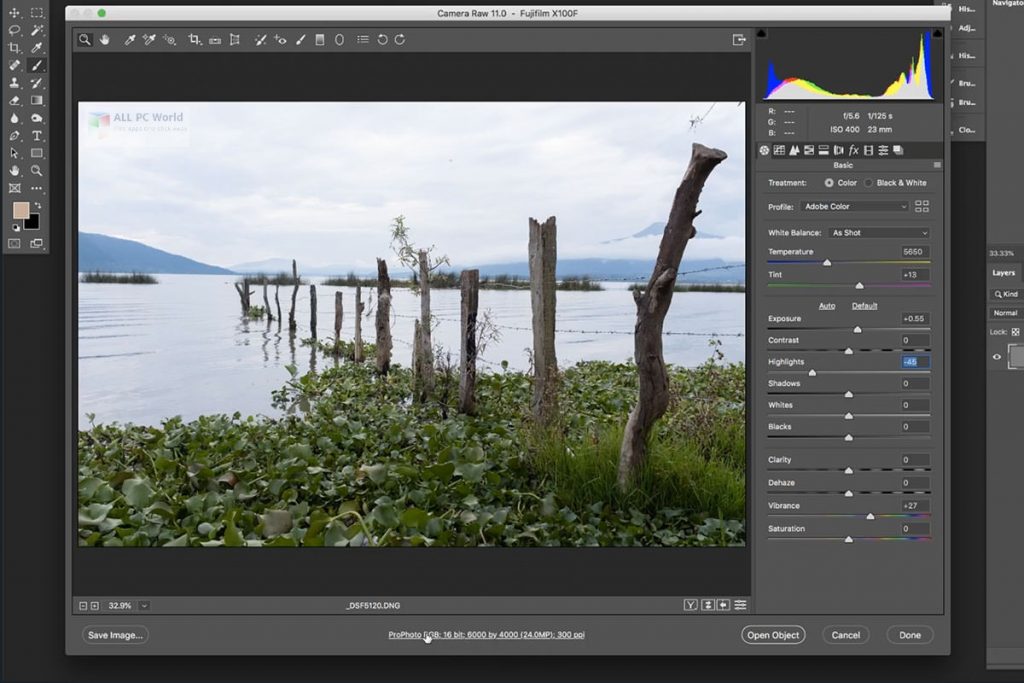

Regardless, I’m happy Adobe has figured out a way to improve their existing upsampling algorithms even further, and hope they can continue down that path. (Though something similar can be said of Preserve Details 2.0.) Perhaps they’ll manage something close, one day – after all, the current iteration is better than almost anyone would have expected back in 2010 or so. Adobe would have to do some absurd wizardry behind the scenes in order to double a photo’s linear resolution without losing much apparent image quality. In short, it’s much better than any of the upsampling algorithms. There are so many finer details in this image, and the non-detailed areas have substantially less noise as well. I took this photo using the Panasonic S1R’s sensor-shift mode, so it’s as close as you’ll get to a “real” 188 megapixel shot of this scene. Both of them are clearly better than Bicubic Smoother throughout the image, particularly in areas like the trees and red advertisement on the right, and the same building on the left.įor comparison, here’s how an actual 188-megapixel image looks: Actual 188-megapixel image, taken with sensor-shift If you’re not seeing it, pay attention to the building on the left, which is crisper in the Super Resolution image. Super Resolution is indeed better than Preserve Details 2.0. Now let’s take a look at Preserve Details 2.0, the artificial intelligence upsampling algorithm that Photoshop has had since 2017: Preserve Details 2.0Īnd then Super Resolution, the newest of the three methods, and the subject of today’s review: Super Resolution

The upsampled images we’ll be comparing are 188-megapixel behemoths – four times the original photo’s resolution (AKA twice the linear resolution). First, acting as a control, is the basic upsampling algorithm of Bicubic Smoother.
#ADOBE CAMERA RAW RESOLUTION AISCHNEIDERPETAPIXEL ISO#
The original is a 47-megapixel image from the Panasonic S1R, and all the crops you’ll see in a moment are from that small red rectangle: DC-S1R + LUMIX S 24-105/F4 24mm, ISO 100, 1/20, f/5.6 Here they are. First, this is the uncropped image I’ll be using. (Say that five times fast!) Instead, it’s a solid advancement to impressive technology that already existed.Īh, you won’t believe me without tests. But don’t read too much into headlines claiming that Super Resolution is a revolution.

Don’t get me wrong – I’ve been impressed by Preserve Details 2.0 for years, and any improvement is welcome. Super Resolution also isn’t drastically better than the Preserve Details 2.0 upsampling algorithm that Photoshop has already had since 2017. If that’s what you were hoping for, you’ll need to temper your expectations. The answer is in the title of this review: good, but don’t expect a miracle.Ī 12-megapixel image that has been enhanced to 48 megapixels with Super Resolution won’t match an original photo from a 48-megapixel camera, or even get especially close. The Super Resolution options appear as follows: Open the image in Photoshop’s Camera Raw dialog, right-click on the image, and click “enhance”: It’s easy to apply Adobe’s Super Resolution to any raw file that you have. Rather than using a traditional upsampling algorithm such as Preserve Details or Bicubic Smoother, Super Resolution uses an artificial intelligence upsampling algorithm that Adobe says was trained on “millions of photos” in order to give better results than usual. A 12-megapixel original image would become 48 megapixels a 48-megapixel original image would become 192. In the 13.2 version of Camera Raw, Adobe added a new option called Super Resolution that can upsample any image to 4× the original number of megapixels – in other words, doubling the width and height of the original image. Adobe Super Resolution vs Topaz Gigapixel AI.Applying Super Resolution to JPEGs and TIFFs.


 0 kommentar(er)
0 kommentar(er)
